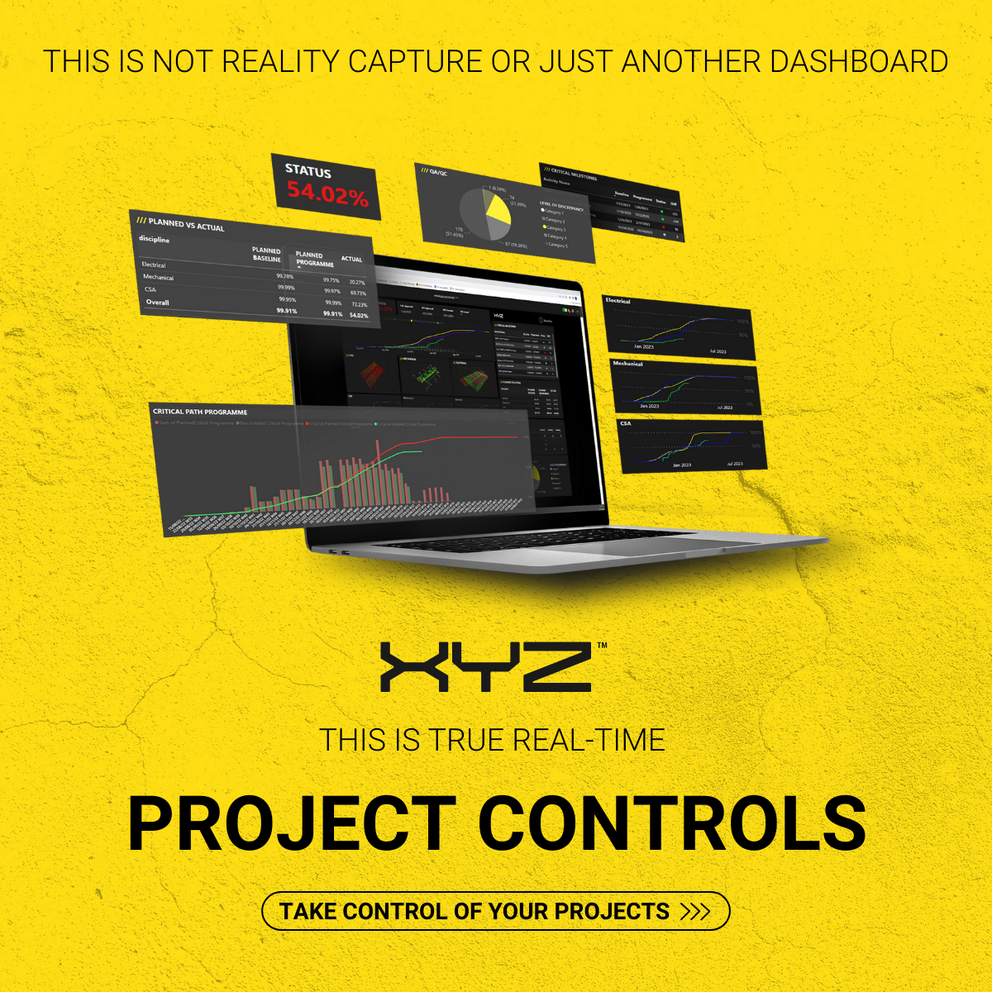-
Services
Services
Find out how we work with our clients and deliver value to construction projects from day one
-
Solutions
Solutions
Discover how all our solutions sync together to deliver construction's most powerful BIM platform to date
-
Built for
Built for
-
Industry
Industry
Understand how we support construction's biggest sectors, and hear from our clients who have experienced the power of XYZ
-
Resources
Resources
Get stuck into all our latest thought leadership, news, reports and industry leading content
-
Company
Company
Dive into what makes XYZ tick, unearth why construction is in our DNA and why we are world leaders in AR solutions

Insights
Building data centres: Market booming but challenges loom

14 November 2022
Waleed Zafar, Mission Critical Director at XYZ Reality, explores the difficulties facing data center construction and explains how Engineering Grade Augmented Reality is key to successful delivery of these complex projects.
The global construction industry was worth USD $7.3 trillion in 2021 and projections show it could almost double in value by 20301. This welcome news can be attributed to a long list of factors including increased demand for infrastructure, warehouses and, in no small part, data centres.
Given society’s growing appetite for digital solutions and connected technology, data centres have never been more important and, at the time of writing, the market shows no signs of slowing down. In 2021, the global data centre market was valued at USD $215.8 billion and some analysts believe that figure will reach $288.3 billion by 2027.
However, despite soaring demand, the data centre sector is not immune to challenges.
Feeling the heat - temperature control and energy drain
Following unprecedented heatwaves in the summer of 2022, some data centers were said to be ‘buckling under the heat’. In the UK, both Google and Oracle reported power outages, citing cooling issues as the cause. Meanwhile, in the US, a survey conducted by the Uptime Institute found that extreme weather had threatened continuous operation for 45% of respondents.
Keeping servers cool is a critical requirement in data center facilities and with severe heatwaves expected to become more commonplace, outages relating to overheating poses real problems.
Another major concern for the data center sector stems from the insatiable power demands of these facilities. On the one hand, skyrocketing energy prices are squeezing margins tight for operators, while on the other, grid capacity is also causing concern. According to a piece in the Financial Times, the Greater London Authority has claimed that residential developments in parts of west London may have to be paused because the existing energy supply is being dominated by a high number of data centres in the region. However, it is worth noting that these claims have been contested.
Complex designs, complicated delivery
From a construction perspective, data center projects face many of the same pressures that are felt throughout the wider industry. Material costs, skills shortages and deep-rooted inefficiencies all pose serious threats to profitability.
If data center construction is to become more efficient, then mitigating error and rework will be at the heart of this. According to an MCSER paper, around 30% of the work performed on-site by construction companies is rework – a frankly unsustainable situation.
But it is the nature of the facilities’ structures that makes these types of projects particularly susceptible to issues. The complexity of a data center’s makeup requires the maximum degree of precision and accuracy. Just one loose connection, a mistake in fiber pop-ups, or an air-con malfunction can put a facility out of action before it’s even come online and – as with any mission-critical project – such issues bring delays which inevitably bring significant costs to both client and contractor.
Besides complexity, the sheer size of data center projects can also be problematic. To offer some sense of scale, a New York Times article described large data centers as ‘industrial scale operations,’ comparing their energy consumption to that of a ‘small town.’
A single facility may house more than 1,000 servers and will require heating, cooling and humidity-control equipment; security features; uninterruptable power source systems; pressurization; ventilation; fire safety; utility service planning and so much more.
It is this size and complexity which makes data centers not only difficult and expensive to maintain, but also incredibly challenging to build. With so many co-dependent elements, the scope for error in coordination and installation of works is immense.
Vast teams of designers, specifiers, general and sub-contractors must collaborate to get projects over the line, but organizing all these operational ‘moving parts’ to function as one cohesive unit is a very tall order.
These issues are often compounded by the outdated ways that project teams process design information. Currently, most visualization technology relies on building on top of 2D drawing workflows, which means teams are approaching highly complex mission-critical projects in the same way they would approach traditional residential developments. This increases the likelihood of inconsistency and legacy inaccuracies, which will only be discovered at the end of installation once the damage has been done.
Augmented Reality – A game-changer for data center construction
Although eliminating error and rework from data center projects may have once seemed like a far-off ambition, Engineering Grade AR™ is already changing what is possible.
Boosted by Engineering Grade augmentation, AR technology is revolutionizing the way these assets are brought online by making time-consuming laser scanning and rework processes obsolete.
The Atom™, the world’s most accurate Engineering-Grade AR headset is purpose-built for construction and works by linking up to the site coordinates to display the 3D model in millimeter accuracy. This means that construction teams onsite can see with millimeter accuracy where installations need to take place and ensure that they’re built right, the first time. They can validate works in real-time and adopt proactive processes throughout the entirety of the construction project. The tech can be applied throughout the advanced coordination, construction and handover phases, bringing incredible efficiencies at every stage.
Most significantly, being able to see the 3D model overlayed against the site opens the door to proactive validation. Errors are spotted when or before they occur, saving vast amounts of time that would previously have been lost to inspections and subsequent remediation.
The goal for XYZ Reality was to develop a tool which enables construction management teams to build it right, first time and deliver a level of onsite accuracy never seen before. With the Atom, that’s what we have delivered, and we are already seeing the benefits out in the field.
We’ve worked with contractors around the globe to reduce rework and deliver their projects on time and within budget, bringing rework activity down from 30% to less than 1%. Ultimately, the Atom is helping bring data centers online faster and to a higher standard of quality than ever before.
Want to know more about rework, its causes and how the Atom can help you eradicate the issue altogether? Download our whitepaper, Rethinking Rework.







